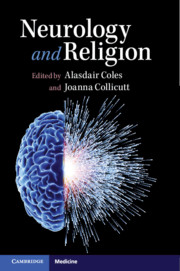Book contents
- Neurology and Religion
- Neurology and Religion
- Copyright page
- Contents
- Contributors
- Preface
- Part I The Neurological Study of Religion
- Part II Neurology and Religion
- II.I Clinical Conditions
- II.II Therapy
- Chapter 16 Religion and Spirituality in Neuro-Rehabilitation
- Chapter 17 Eastern Spirituality, Mind–Body Practices and Neuro-Rehabilitation
- II.III Death and the Brain
- Bibliography
- Index
- References
Chapter 17 - Eastern Spirituality, Mind–Body Practices and Neuro-Rehabilitation
from II.II - Therapy
Published online by Cambridge University Press: 28 October 2019
- Neurology and Religion
- Neurology and Religion
- Copyright page
- Contents
- Contributors
- Preface
- Part I The Neurological Study of Religion
- Part II Neurology and Religion
- II.I Clinical Conditions
- II.II Therapy
- Chapter 16 Religion and Spirituality in Neuro-Rehabilitation
- Chapter 17 Eastern Spirituality, Mind–Body Practices and Neuro-Rehabilitation
- II.III Death and the Brain
- Bibliography
- Index
- References
Summary
Acquired brain injury (ABI) in adulthood is a sudden insult to the brain that does not worsen over time. Examples of ABIs include traumatic brain injury, stroke (ischaemic and haemorrhagic), infections (e.g. encephalitis, meningitis), hypoxia or oxygen starvation (often occurring following cardiac arrest) and enduring difficulties following the resection of brain tumours. Difficulties that emerge from these brain lesions are complex, multi-faceted and enduring. Psychological needs are central, including anxiety, depression, anger and irritability, post-traumatic stress and struggles to adjust to the condition (Williams and Evans 2003). These often occur alongside physical restrictions (reduced, mobility, balance, sensation), cognitive impairments (problems in information processing, attention, memory, planning and organising, visuospatial perception and social communication) and strain in interpersonal relationships, with progressive social isolation developing over time (Elsass and Kinsella 1987).
- Type
- Chapter
- Information
- Neurology and Religion , pp. 191 - 213Publisher: Cambridge University PressPrint publication year: 2019
References
- 1
- Cited by



